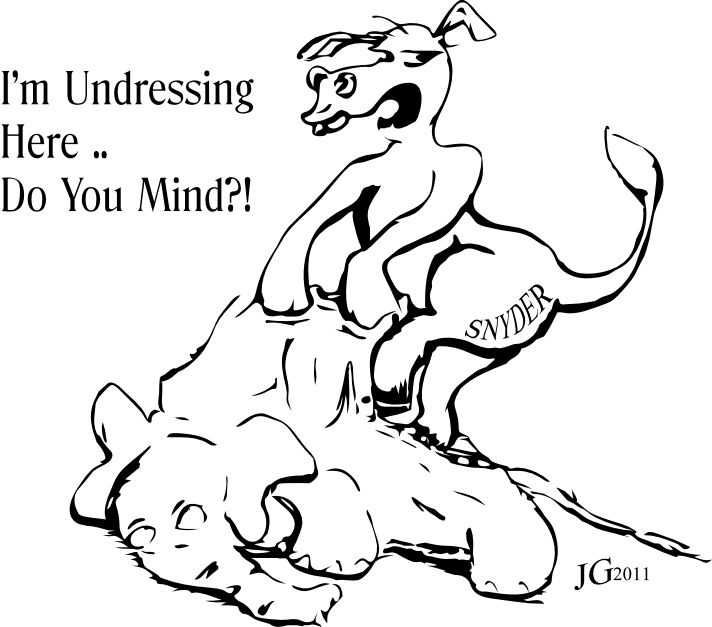
 |
NAVIGATION
|
NEWS TIPS!RightMichigan.com

Who are the NERD fund donors Mr Snyder?Tweets about "#RightMi, -YoungLibertyMI, -dennislennox,"

 |
The Strategic Cost Of DebtBy Kevin Rex Heine, Section News
~ Promoted even as a non Michigan based article - Well Done Kevin. ~
"Think what you do when you run in debt; you give to another power over your liberty." (Benjamin Franklin) The national debt of the United States is the sum total of all annual budget deficits and surpluses accumulated since America became an independent nation; it represents the face, or principal, amount of marketable and non-marketable securities currently outstanding. According to the U.S. National Debt Clock, which is updated in real time, the national debt - as of when this article was posted - is currently sitting at about $13.91 trillion. Given that this is over a $3 trillion dollar increase from the ~$10.69 trillion debt that BHO "inherited," and given that this debt is approximately 94.87% of America's ~$14.66 trillion Gross Domestic Product, we the people have good cause to be concerned.

Because the number gets thrown around so much these days, I think we've lost our perspective of just how much money a trillion dollars really is. Back in March of 2009 I posted an article on what a trillion dollars looks like; I recommend a quick reread so that you can refresh yourself . . . before you read any more of this article. (And keep in mind that the final picture represents an area identical to the in-bounds area of a standard American-style football field, endline to endline and sideline to sideline.) For another sense of perspective, at the time that the commercial I just showed you was supposed to be aired (January 1986), the U.S. National Debt was only ~$2 trillion (and yes, it seems very odd to associate the word "only" with the word "trillion"). In November of 2000, while the nation was wondering about the outcome of hanging chads in Florida, the national debt had grown to ~$5.67 trillion. In 2004, right after Dubya's reelection, the national debt was ~$7.54 trillion; and at the end of 2008, the debt that GWB was going to be turning over to BHO was ~$10.69 trillion. That's about an 8.69 trillion dollar increase over a period of 23 years (an average of 0.378 trillion per year, for those needing mathematical assistance.) Compare that to the ~3.22 trillion dollar increase in BHO's first two years. But those numbers aren't the entire story. At present, Unfunded Liabilities (Social Security, Medicare, and Prescription Drug benefits) amounts to a total of $111.87 trillion. So adding the unfunded liabilities to the national debt produces a total national financial hole of . . . wait for it . . . 125.78 TRILLION DOLLARS! At current deficit spending rates, by the end of 2015 our national debt will be ~$24.51 trillion; which, when added to projected unfunded liabilities of ~$144.14 trillion, will produce a total national financial hole of ~$168.65 trillion . . . with only ~$17.01 trillion of GDP to offset it. Yes, based on current rates, sometime between now and 2015 the United States will be financially insolvent. Most of the regular readers on this site are well aware that the Founding Fathers belonged to an age when debt (whether national or personal) was recognized for the vicious specter that it is. Even when borrowing was necessary in a dire circumstance (such as a war or other bona fide emergency), they held that it should be done frugally and repaid promptly. The War for Independence created a debt sufficiently large that the U.S. National Debt on March 4, 1789, was ~$75 million; at that time ~40% of America's GDP. This so disturbed the Founding Fathers that by 1835, the United States was debt free (which lasted until 1840, and we haven't been debt free as a nation since). While Article 1, Section 8 of the United States Constitution authorizes Congress to borrow money, this was intended to be a power exercised for emergency use only, and to be repaid as quickly as possible. The Founding Fathers considered it immoral to pass on debt incurred by one generation to a future one for repayment. In their opinion, passing debt down to future generations would cause those children to be born into a certain amount of bondage (read: slavery) for which they had not volunteered, instead of being truly free. They knew that the burden of debt is as destructive to freedom as subjugation by invasion or conquest. Somewhere along the line, we as a nation forgot that principle. We once were a cash-based economy, but in modern times we've become a nation with a debt-based economy. All this talk of loosening up credit is really another way of saying that we the people are being encouraged to go deeper into that which the Founding Fathers would advise us to abhor like the plague. An individual who is in debt may decide to avoid opportunities that one who is not so burdened might consider worth pursuing. A person burdened by debt may consider that the risks associated with those opportunities are too great to take the chance of compromising his ability to stay current on what he owes. Should the risk backfire, he may find himself unable to keep up the payments to the people or companies holding his notes, with the attending consequences. Thus, because of the yoke of debt, a person is not free to pursue happiness as he sees fit; in essence, the debtor is a slave to his creditor. What is true of individuals is also true of nations. A debtor nation ultimately has to answer to its creditor nations, regardless of the relative sizes of their economies. On a list of nations ranked by GDP (the market value of all final goods and services from a nation in a given year), the United States consistently ranks first. America's economy is larger than the economies of the next three nations (Japan, China, and Germany) combined. And that is a problem, because about this time two years ago, the next three nations on that list (France, United Kingdom, and Italy) would have needed to be added in order to equal America's economic output. However, the GDP of the United States has not significantly increased in those two years. Another problem is that, unlike the end of World War 2 (when all of the national debt was held by fellow Americans), by 2007 about 44.5% of all the U.S. debt was considered "external debt," that is, owed to foreign lenders and repayable in foreign currency, goods, or services. As of July of this year, the largest holder of that debt, at $846.7 billion, is China. And that is a more serious problem than you might think. Back in 1956, during the Suez Crisis, President Eisenhower, in order to remove the threat of Soviet intervention on behalf of Egypt, threatened to sell off large amounts of the U.S. Government's holdings of Sterling Bonds. This move, had it been carried out, would have wrecked the Pound within weeks. British leadership knew that Ike wasn't bluffing, and that devaluing their native currency would be tantamount to destroying their economy. In the middle of the fighting, and without consulting their French and Israeli allies, Britain unilaterally declared a cease-fire and began preparations to turn the conflict zone over to a United Nations Emergency Force. From a historical standpoint, 6 November 1956 was the day that the British Empire ceased to exist. While the United Kingdom and the French Republic retain the ability to operate militarily in any corner of the globe, Britain is no longer willing to do so without U.S. support. (As a relevant sidebar, the Suez Crisis also resulted in permanent damage to already weakened Franco-American ties.) In effect, by allowing itself to become heavily indebted to the United States during WW2, Britain also surrendered its position as a global superpower to its bondholder. And that's the rub. The week before Thanksgiving, for reasons that aren't particularly clear, things got a little testy on the world's most militarized border. More specifically, the exchange of fire between North and South Korea involved a disputed international maritime boundary in the Yellow Sea on the west coast of the Korean Peninsula that was drawn unilaterally by the United Nations in 1953, and which North Korea refuses to recognize. In response to this latest act of belligerence by one of the charter members of the Axis of Evil, the United States 7th Fleet (headquartered in Japan) promptly deployed a task force - Task Force 70 - into that very same Yellow Sea. The Chinese military isn't a big fan of U.S. Navy carrier battle groups, tending to view them as the defining symbol of United States military power projection. Which is true enough, because unlike China, America can project militarily into any corner of the planet. This includes the Yellow Sea, which the Chinese government all but considers its sovereign territory (including the parts of that sea that are outside the internationally-recognized territorial demarcation). For now, as the situation on the Korean Peninsula seems to be steadily deteriorating into a disintegration of the 57-year armistice and re-escalation of an old war (recall that neither Seoul nor Pyongyang actually signed a peace treaty), China seems content to let America be the heavy hitter . . . for now. A destabilized North Korea would result in a flood of refugees that China is not prepared for. But make no mistake, neither is China going to take the risk of a unified, pro-U.S. Korea. (It's bad enough that they have to deal with Japan and Taiwan.) And, unlike three generations ago, they don't have to.
The Strategic Cost Of Debt | 3 comments (3 topical, 0 hidden)
The Strategic Cost Of Debt | 3 comments (3 topical, 0 hidden)
|